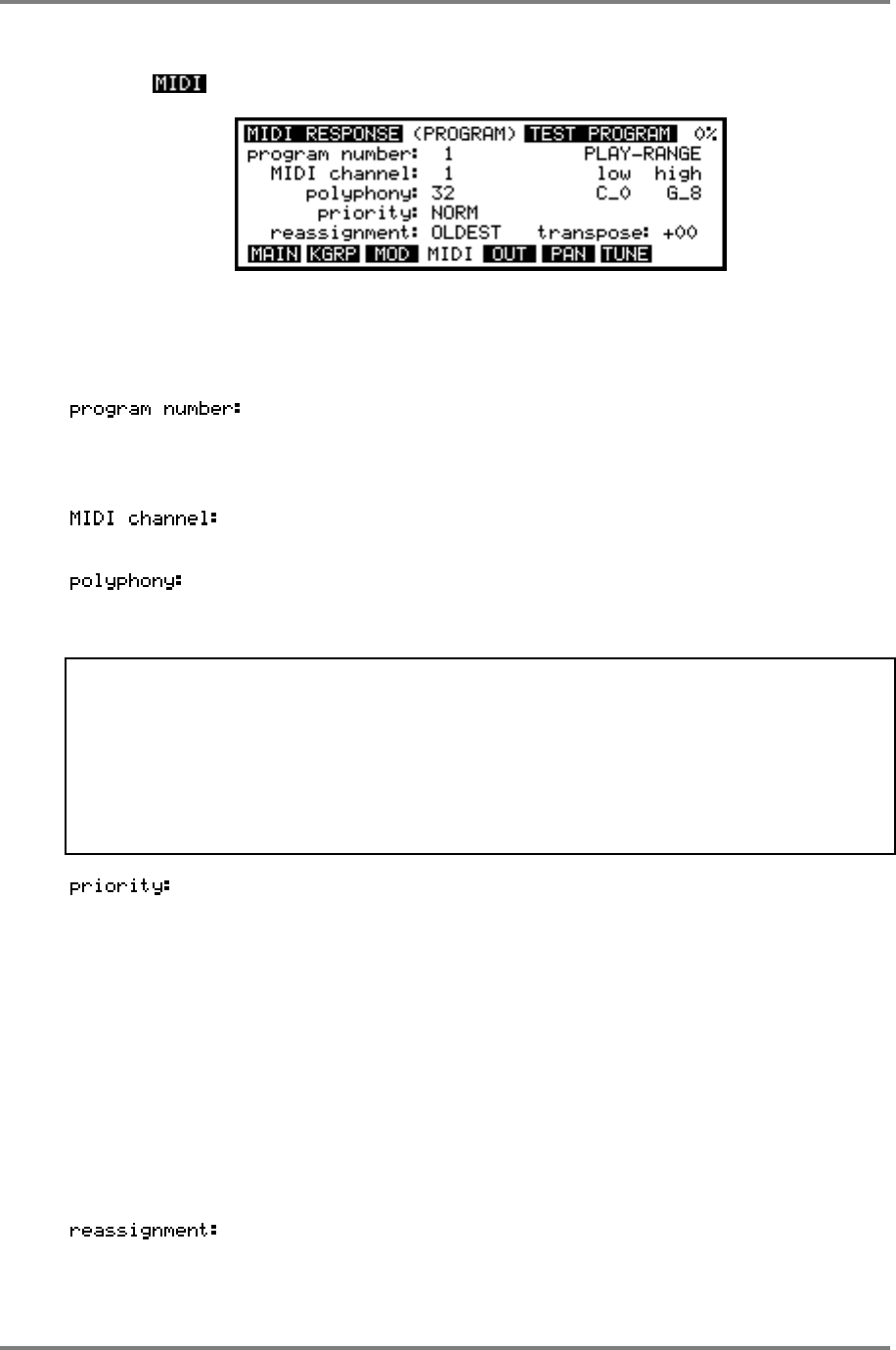
EDIT PROGRAM - SINGLE
CD3000XL OperatorÕs Manual Page 69
MIDI PAGE
Pressing displays this screen:
The top line of this page contains a field which allows you to change the program currently
being edited. You may select different programs for editing here if you wish.
The parameters on this page are as follows:
This field allows you to set the program number of the program. This is
the number which will be called up on receipt of a MIDI Program
Change message and corresponds to a patch number on a
synthesiser.
This parameter selects the program’s MIDI channel! The choice is OM
(omni) and 1 to 16.
This allows you to select how many notes (1 to 32) can be played at a
time by this particular program. This should normally be left at the
default, 32.
NOTE: This parameter should normally be set to the default of 32. Its inclusion here is mostly
for historical purposes. On the S1000/S1100 (and early versions of software for the S2800,
S3000 and S3200), it was common to use this parameter for hi-hats and the like layered over a
drums program (i.e. the hi-hats would be set to a polyphony of 1 voice so that the closed hi-hat
shut off the open hi-hat). With the MUTE GROUP function, however (see later in this section),
this parameter is not used so much but is retained should you load an old S1000/S1100 or
early S2800, S3000 or S3200 sound library disk.
See below for a description of the MUTE GROUP function.
This allows you to specify how notes will be ‘stolen’ by other programs
if this is necessary. There are four settings: LOW, NORM, HIGH and
HOLD. If a program is set to LOW priority, then notes from this
program will be stolen first. If set to HIGH, then notes from other
programs with lower priority will be stolen before they are stolen from
this program. NORM is, of course, normal priority and, if any note
stealing has to take place, this program will be affected no more or less
than others with NORM assignment.
If you are playing a complex piece of music using many programs, it is a
good idea to set important, lead-line sounds to HIGH, and less
important background programs to LOW.
HOLD is a special priority. If a program’s priority is set to HOLD, notes
from this program can only be stolen by the same program.
The notes which will be stolen are determined by this parameter -
either the OLDEST note will stop playing when a note is stolen or the
QUIETEST one.


















